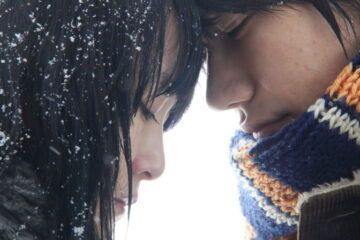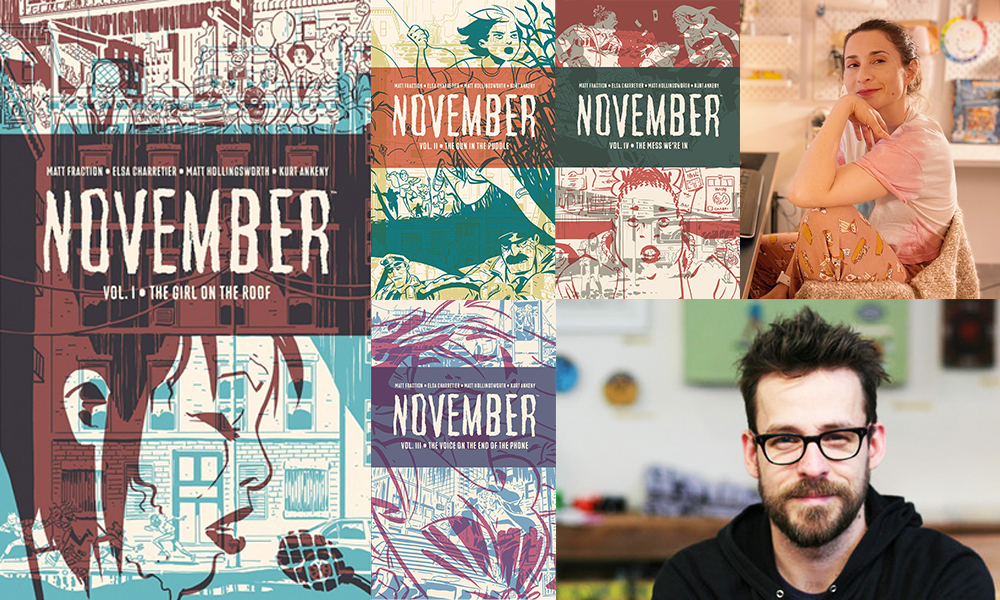Part One of an Occasional Series
Contemporary Japanese fiction has come into vogue in the wake of the Haruki Murakami craze which swept westward from Japan itself following the publication, to enormous acclaim and popularity, of Norwegian Wood. The popularity of Murakami’s works quickly gave rise to a deluge of translations of a number of other popular and contemporary Japanese writers like Banana Yoshimoto, Natsuo Kirino, Ryu Murakami, Yoko Ogawa and a host of others. Looking around today, it’s hard to imagine what the face of Western literature would look like without the magical realist (or surrealist) themes and preoccupations of so much new Japanese work, and it is in large part owing to the translators of these works, themselves, individuals like Stephen Snyder, Jay Rubin, Michael Emmerich, Philip Gabriel, Ted Goosen, and Alfred Birnbaum, all of whom have been outspoken about not only their own art, translation, but about the value they place in Japanese writers both of the modern and contemporary periods.
It is worth noting that the current uptick in the popularity of Japanese export fiction (ignoring the sweeping popularity of manga in the 80s and 90s) is not unprecedented, but perhaps something more akin to a watershed moment. The critical mass of Japanese literature and poetry making its way into English translation since the 1940s, spearheaded by titans like Donald Keene, Van C. Gessel, and Makoto Ueda, translating modern writers like Yukio Mishima, Shusaku Endo, and poets like Basho, Takuboku Ishikawa, and others, has been immense, as was the awarding of the 1994 Nobel Prize for literature to Kenzaburō Ōe, the first Japanese to take the prize since Yasunari Kawabata in 1968.
The character of contemporary Japanese fiction, or at least what makes its way to the U.S., has evolved over the years, the dual influence of Yasujiro Ozu’s family dramas and heartfelt comedies and the mythologic tinged, orientalist works of Lafcadio Hearn becoming wed into a new breed of Japanese fiction which borrows much from the West, but often principally from Western works which were, themselves, borrowed in part or whole cloth, from Meiji era Japan. Many critics liken the experience of reading one of Haruki Murakami’s or Yoshimoto’s novels, to an act of cleansing. There is an almost meditative aspect to even the horror tinged, or soaked, narratives of Ryu Murakami which defies definite literary classification but which holds an appeal to American readers, and Western readers more generally.
Which brings me to the point of this essay, which is, to analyse certain of the film adaptations of these authors’ works, which have made it to the West, or at least warranted English subtitling. To keep things concise, the films here discussed are:
Haruki Murakami
Tony Takitani (2004)
All God’s Children Can Dance (2008)
Norwegian Wood (2010)
Banana Yoshimoto
Tsugumi (1990)
Kitchen (1997)
Ryu Murakami
Audition (1999)
Haruki Murakami (hereafter referred to as MH, to Ryu Murakami’s MR) presents the most intriguing survey of cultural interpretations of his works, with two Japanese adaptations, one made with Western interest in the film in mind, and one American adaptation available only on a Polish DVD.
Tony Takitani, perhaps the seminal film of Jun Ichikawa’s all too short directing career (whose Tsugumi is discussed later in this essay), is a nuanced adaptation of MH’s short story of the same name. Its plot centres around the life of a technical illustrator who falls in love. The analogy is keen, between a man whose career involves the careful analysis and reproduction of minute, but integral detail, and the prosaic, disassociated analysis of his own life and relationships, both with his father, a famous trombone player, often away in China, and his eventual wife. MH and Ichikawa by extension, employ Takitani’s perspective to give an almost architectural rendering of the experience of both love, and loss. Takitani’s wife is fixated upon clothes and psychologically incapable of wearing the same thing twice, and equally incapable of parting with the once used garments. With her passing, she leaves behind her a closet filled to the brim with scarcely worn outfits. Takitani’s grief expresses itself as he attempts to liquidate the massive collection by gifting them to a woman he meets through a personal ad, attempting, through the action, to capture some piece of his deceased wife’s essence, a scale reproduction in other words. In this sense, the story borrows heavily from Hitchcock’s Vertigo, with which both creatives were or are, doubtless, familiar.
Ichikawa’s cinematography gradually contracts along with Tony’s life, until the film becomes a series of portrait shots, before gradually expanding, again, along with the protagonist’s passage through grief. It is this technical aspect that best speaks to Ichikawa’s directorial ability, honing in on key imagery and reflecting it in the craft of the film itself without allowing his work to overshadow the story being told. The acting, too, is executed with the nuance of contemporary drama, but retains the quiet and unexpressed, perhaps inexpressible, quality of Murakami’s story.
All God’s Children Can Dance, again based on an MH short story of the same name, is an American adaptation, the sole directorial outing of Robert Logevall. It has the hallmarks of Murakami’s short story, a man and a woman navigating a relationship amidst the vicissitudes of everyday urban existence, however the action is transplanted to the Korea-town neighbourhood of southern Los Angeles.
Played as a sort of pastiche of Wong Kar Wai sentimentality and the, at times tedious sexuality of Nagisa Oshima, or Abdellatif Kechiche, the film is a bit of a mishmash, giving prime screen time to the protagonist, Kengo’s, relationship with his girlfriend, while tending to his mother’s eccentric belief that he was conceived by, and is the son of, God. Kengo’s search for his actual father makes up the climax of the film which, offering so few answers, presents a far more striking final note in the short story than in the film where the somewhat staid cinematography and budget limited visual imagination leave viewers on something of an anticlimax, and not, I believe, an authorially intended one. Despite its limitations, however, what the film does represent, is the interest which Western audiences have taken in Murakami’s fiction, though it betrays, also, the limited nature of the director and screenwriter’s engagement with the core themes of those works. There is a tendency in reading MH to become oversensitive to the recurring elements, cats, weird sex, dark passageways, strange worlds, and characters of unstudied eccentricity, but the danger, naturally, becomes overemphasising their importance. These authorial tics certainly have meaning, but they also serve simply as markers of MH’s own preoccupations. They are a part of a whole, not a magically animated Frankenstein’s monster made up of those disparate elements. What Logevall seems to latch onto is the importance of romance in Murakami’s fiction, which, littered as it is with characters isolated from one another, even within their relationships, seems a rather oversimplified rendition.
Norwegian Wood, on the other hand, is a sumptuously produced, directed, and acted, version of MH’s most internationally acclaimed novel, and the one which drove him into self imposed exile in Germany and the U.S. for nearly eight years. Toru, played with razor sharp subtelty by Kenichi Matsuyama, the rising star of Japanese cinema perhaps best known for his turn as L in the live action adaptations of the popular manga and anime, Death Note. He struggles with his personal and romantic identity as he is pulled in two directions by the two principle love interests in the film, Naoko, the ethereally beautiful but tragically melancholy girlfriend of their deceased mutual friend, Kizuki, and Midori, Toru’s vibrant but acerbic classmate. Set against the Japanese student strikes on university campuses in the 1960s, the novel is the closest to autobiography that MH has ventured, and so it is unsurprising that both the novel and film have a verisimilitude which appeals to a broad viewership. Most affecting, however, is Radiohead frontman, Jonny Greenwood’s haunting score, which is as sparse and evocative as his earlier work for Paul Thomas Andersen’s There Will Be Blood (2007). Further illustrating the international appeal of MH’s work, the film is directed by Vietnamese born, French film director Tran Anh Hung, whose works include the Oscar nominated Scent of Green Papaya (1993). The film was nominated for the Golden Lion at the Toronto International Film Festival and had limited releases in both the U.S. and U.K. where it performed admirably at the box office.
Banana Yoshimoto’s works have also, as noted, achieved spectacular popularity in the West, so it is unsurprising that the same director who took to Tony Takitani, should have cut his teeth adapting one of her novels, Goodbye Tsugumi to film. Here we see Ichikawa in his early days, but still with the supreme confidence of composition which made Tony Takitani such a cross continental hit. The camera sweeps to and fro through Tokyo cityscapes, reflecting the vacillating thoughts and desires of its protagonist, Maria, as she faces the end of her university career. Returning to her childhood home for the Summer to spend time with her chronically ill and bitingly sarcastic cousin, Tsugumi, Maria spends her final Summer in rapt contemplation of the life which lies before her, even as Tsugumi, in Dylan-esque fashion, rages against the twilight of her life. As in Takitani, the camera takes charge of the storytelling, panning along breathtaking seascapes, and focussing on ramshackle concrete seaside buildings where stray dogs linger and small time hoodlums make sport of bullying one another. The duality which exists between beauty and the inevitable disintegration of such, is the focus of the film, however, typical of Yoshimoto, the film concludes on a hopeful note, with Tsugumi’s final goodbye offering hope as well as grief and, to Maria, direction.
Similarly, the Hong Kong film adaptation of Yoshimoto’s first and most popular novel, Kitchen, has at its heart, the question of where young people find direction in their lives. Aggie (Mikage in the novel), who has recently lost her grandmother, is forced to confront the possibilities of her life. In doing so, she grows close with her grandmother’s hairdresser (flower shop owner in the novel), Louie (Yuichi in the novel), and his mother, Emma (Eriko in the novel). In Louie, Aggie finds a kindred spirit, and when he loses his mother to an act of senseless violence, both are stranded in the same miasma of grief and realization, as they struggle to enter the period of their lives in which friends and acquaintances begin, inevitably, to die. Ably directed by Ho Yim, the film still bears the hallmarks of its limited production values. Overexposed film on the DVD release leaves everything haloed in fluorescent fog, but at its heart, the film retains the emotional resonance of its source material, and the comic moments as played by the clownish Louie (Jordan Chan) and the affectionate but desultory Aggie (Yasuko Tomita) carry the weight of an otherwise downbeat story. Particularly the seminal romantic gesture as Louie visits the hotel where Aggie is staying while on sojourn from culinary school in the country, plays as a self aware riff on typical rom-com fare, and the final moments in which the friends-cum-lovers kiss in the rain (a departure from the source material) works well, if only as a slightly self aware parody. A bit of cheese can play well when the actors and the audience are game for it, and though the film lacks somewhat in the production department, it more than retains attention and pays dividends on re-viewing.
It bears mentioning that in addition to the Hong Kong adaptation, a Japanese version, filmed for television does exist, but not that I could find in a subtitled DVD.
And the third of our contemporary Japanese literary masters, Ryu Murakami, has had a profound impact on both the literary and film scenes of his native Japan and beyond as well. His least accessible (and hefty) novel, this author’s personal favourite, Coin Locker Babies has been optioned by several studios following its English publication, though nothing has yet surfaced. Takeshi Miike’s adaptation of RH’s novel, Audition garnered broad critical praise and a cult following in America, where it has since become a staple of the new, post Cronenburg, body horror and torture film genres. It’s saturated but muddy colour palette has a noir feel to it, similar to Lars Von Trier’s directorial debut, The Element of Crime (1984), and its fixation upon the horrors lurking beneath people, particularly beautiful women’s placid exteriors, fits firmly within the canon of Western film noir, a clear instance of cross-cultural pollination which one can see in MH’s work as well, as, by his own admission, MH read a lot of Raymond Chandler and Dashiell Hammett novels in his younger days.
Of course, the films here discussed are just a superficial sampling of many wonderful adaptations of Japanese works. There are many many others, but as international films, this sampling may repay Western attention more, as adaptations of already familiar works, and might hopefully serve as gateways to a broader and more inclusive appreciation of foreign film and literature. That is the aim anyway. All of these films, with the exception of Tsugumi are available as English subtitled DVDs, although their relative scarcity may bear putting a formal request through one’s local library’s ILIAD account.
Special Thanks to Laura Jenemann, Denise Claussen, and all of the Gateway library at George Mason University’s librarians for their help in making these films available for myself, and others to enjoy in the permanent media collection.
Author’s Note: This essay was originally written in 2015 for the George Mason University library services blog, as part of an outreach project to broaden familiarity with the library’s media collection. It has been modified to its current form, for the purpose of addressing a broader audience.




